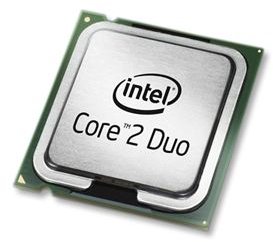Explaining Intel CPU Processor Speeds: What to Know Before You Buy
Intel CPU Processor Speeds
One of the most important components of any computer is the processor. The processor is responsible for most of the heavy lifting that your computer must do to run programs – only graphics rendering is off-loaded to the GPU. It is important that you understand Intel CPU processor speeds when you are thinking about purchasing any computer.
Unfortunately, the complexity of computer processors make its hard to express Intel CPU processor speeds in a simple, one-size-fits-all manner. Some processors are faster than others at one task, but perhaps slower than another. This guide will try and help you understand processor speeds so that you can make an informed processor buying decision.
Clock Speeds
The clock speed of a processor has traditionally been an important part of judging the speed of a Intel processor. The clock speed is an expression of the number of cycles the processor can complete per second. Higher numbers are always better.
Judging Intel CPU processor speed has become more complex recently because of a feature called Turbo Boost. Turbo Boost is found on Core i5 and i7 processors in both laptops and desktops. Turbo Boost dynamically increases clock speeds based on the thermal headroom of a processor. The minimum clock speed is still the clock speed advertised, but the processor may often times increase its clock speed by 500Mhz or more. A full list of these processors, and their maximum turbo boost speeds, can be found on Intel’s website.
The Core of the Matter
When a clock speed number is quoted for a computer it applies to all cores on the processor. A core is an individual processing unit on the CPU. Each core can process data on its own. In a way, having a processor with two cores is like having a computer with two processors, although this is a generalization.
Adding cores to a processor does not result in a linear performance increase of Intel CPU processor speed. For example, let’s say you have a single-core 2Ghz processor and a dual-core 2Ghz processor. The dual-core processor does not function like a 4Ghz single-core processor.
However, the extra core does mean it is possible to process two threads of data at once. This makes it easier for the processor to handle multi-tasking, and there are some programs, like video editing software, that dramatically benefit from the addition of cores.
Dual cores are the industry standard today. Single-core processors are only found in some low-power laptops. Quad core processors are becoming more common, but aren’t necessary for the average user. You only need a quad-core if you do 3D rendering or video editing.
Laptop Processors
If you are buying a desktop computer you can safely purchase a processor with a fast speed and four cores. Buying more than you need will obviously cost you more, but it otherwise has no negative consequences.
That isn’t true with laptops. The general rule with laptops is that faster processors with more cores require more energy. When comparing Intel CPU processor speeds in laptops, consider what you actually need. A quad-core may be attractive, but jumping from a Core i5 to a Core i7 will reduce battery life by around 20% on most laptops.
Also keep Turbo Boost in mind. Some Intel laptop processors have very low stated clock speeds but very aggressive Turbo Boost settings. Intel calls these “ultra-low voltage” processors. These are good processors for ultra-portable laptops.
Conclusion
Intel CPU processor speed is an important concept to understand before buying a new computer. I hope this guide has clarified a few issues for you. Feel free to leave a comment if you have questions.
